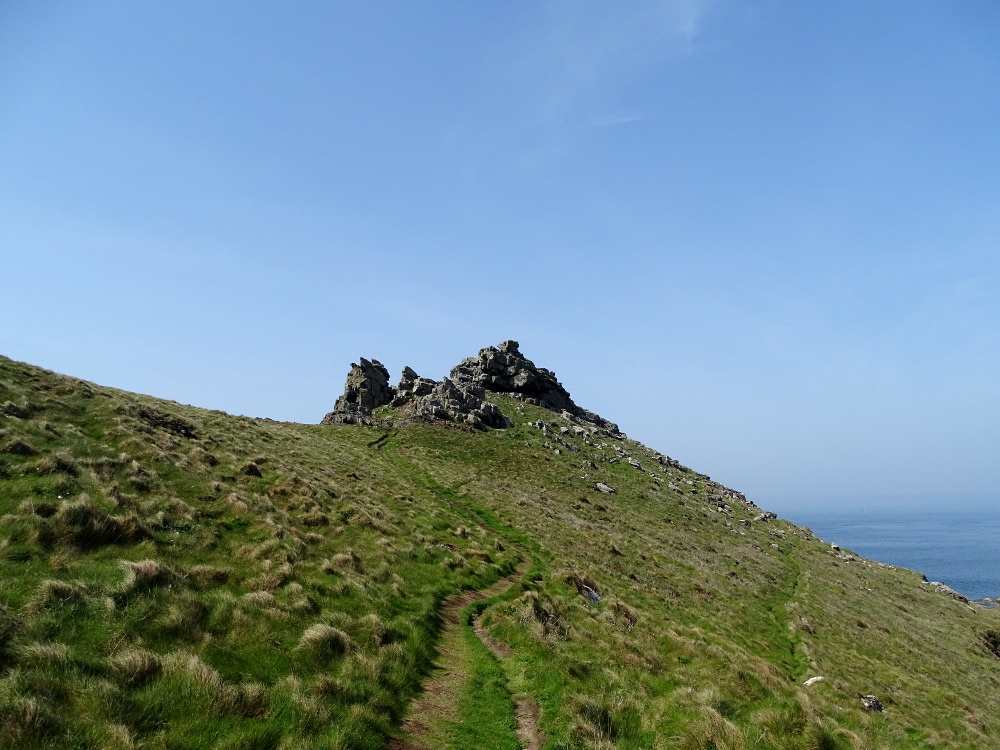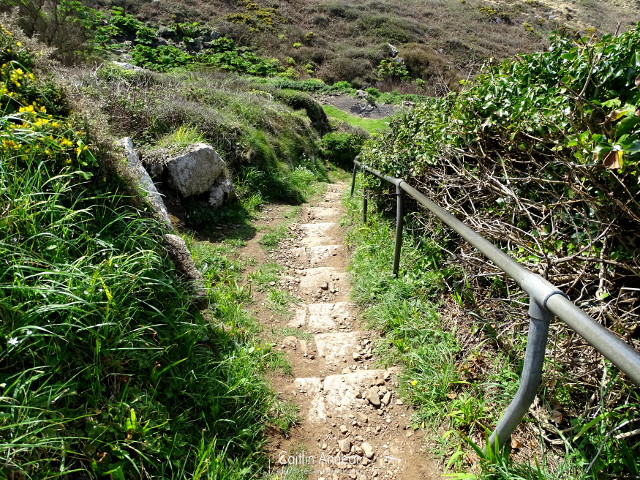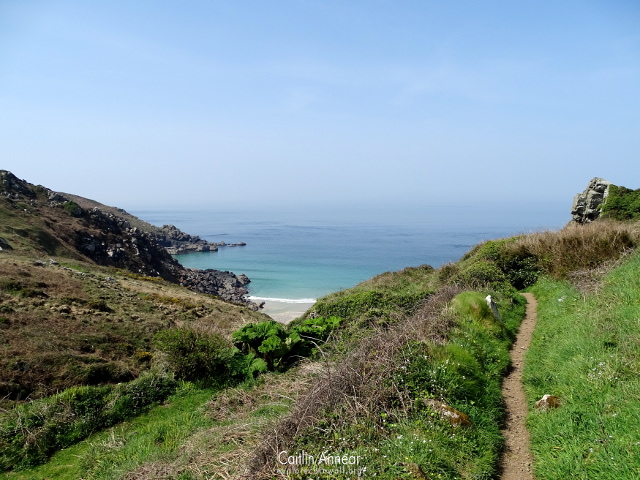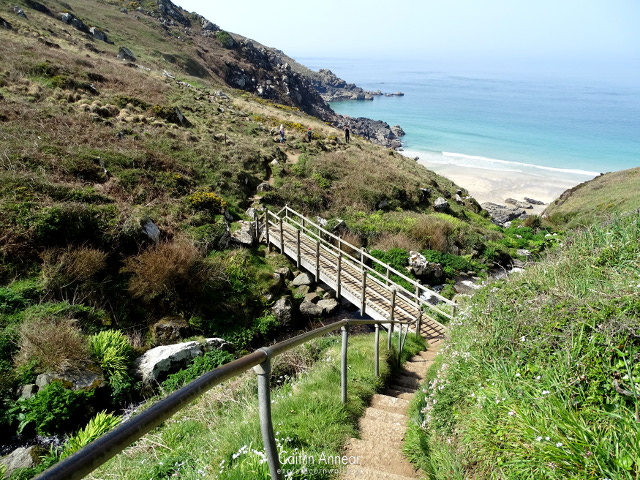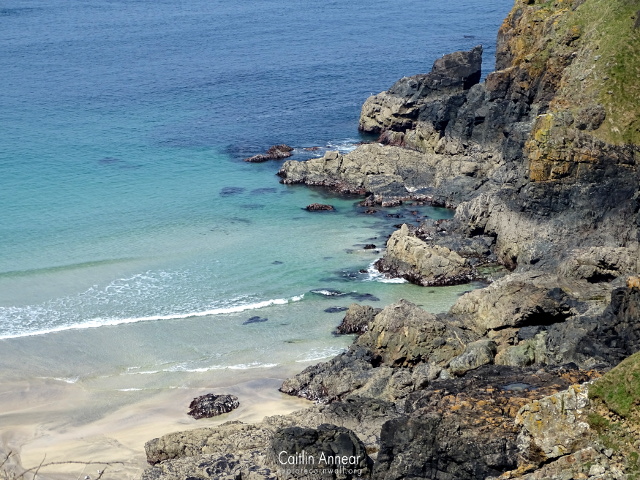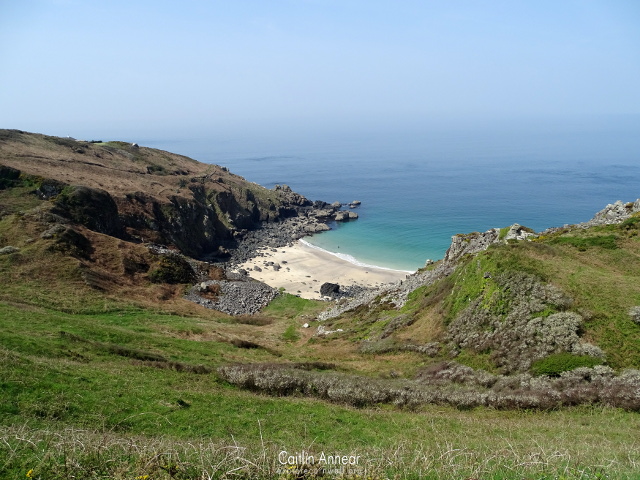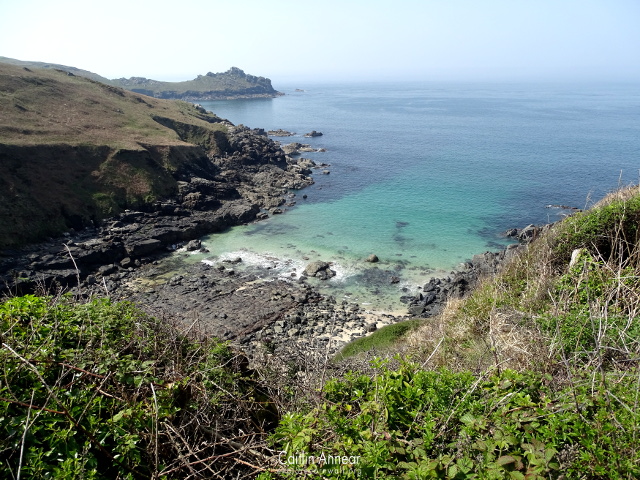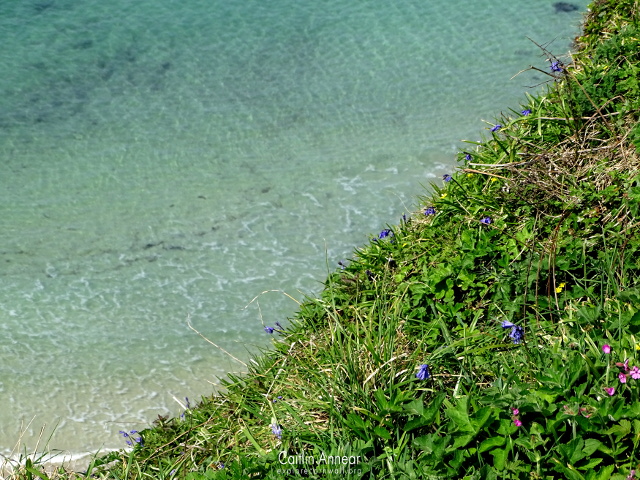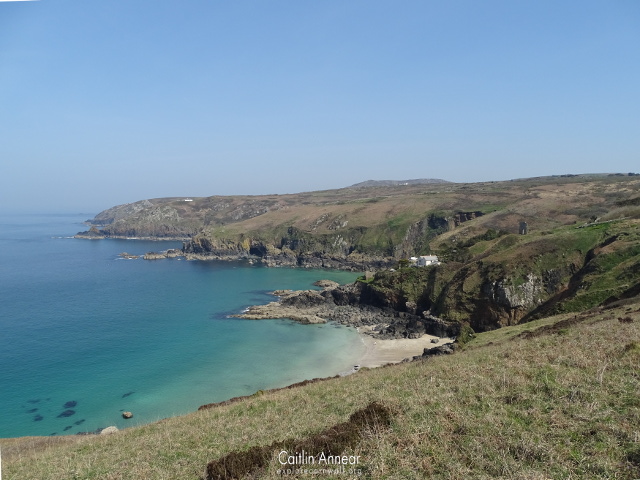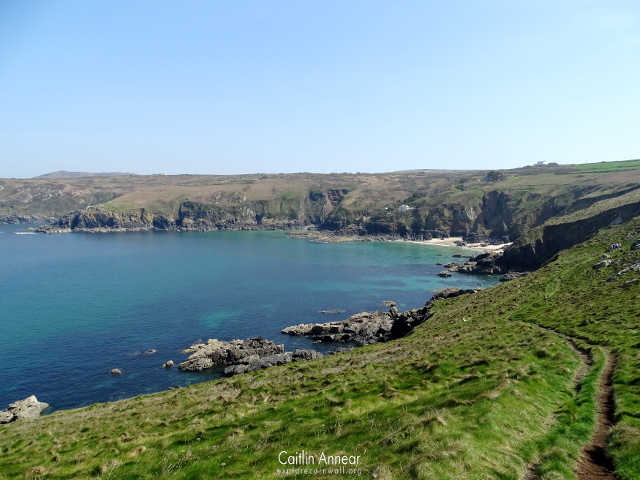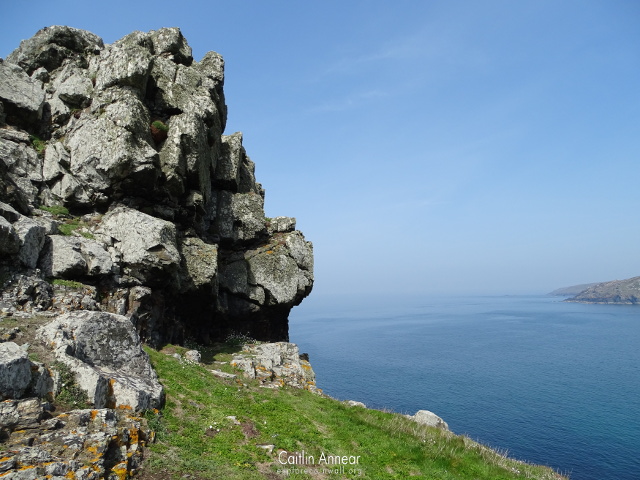Over Easter weekend, Scottie and I popped down to Zennor and walked the coastpath to Gurnard’s Head.
This is such a beautiful stretch of the coast, dotted with hidden beaches and relics of mining past. The first bay is made up of Pendour and Veor coves.
The coastpath leads around Carnelloe (or Carnellow) cliff, with a few remains of Zennor Consols mine dotted around. The next cove is Porthglaze, leading onto Carn Neen and Boswednack Cliff.
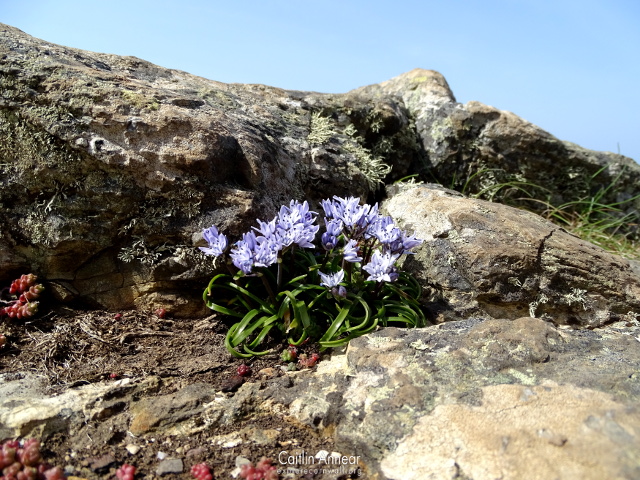
The path eventually leads to Rose-an-Hale and Treen coves, just as the cliff curves around to form Gurnard’s Head. In this area is the remains of Chapel Jane. This is what’s left of an old fisherman’s chapel, much of which has fallen into the sea. It’s name comes from the Cornish ‘yein’ which means bleak. The earliest mention of this church is from 1565, although some of its construction is dated from 1150. It continued to be used until the 16th century. More recent consolidation and maintenance of the revealed a stone bench and possible location of the original alter; the remaining alter can be clearly seen inside the building remains.
Overlooking the sea are two walls of the engine house belonging to Gurnard’s Head Mine (also known as Treen Mine).
Gurnard’s Head itself was once home to Trereen Dinas, this was an Iron Age promontory fort, defensive structure often built on this outcrop of land. The headlands gives wonderful views of this rugged stretch of coastline.
The whole walk follows the coastpath.
Zennor has a small gravel carpark, but apart from this parking is limited in the village.
Historic England (2018) Medieval chapel called Chapel Jane, Zennor. Historic England. Available at: https://historicengland.org.uk/listing/the-list/list-entry/1004631 (Accessed: 18 May 2019).
